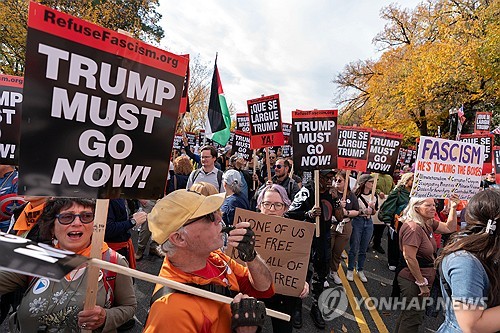
(Seoul=Yonhap Infomax) Seon Mi Jeong – The dollar-won exchange rate is expected to trade around the mid-1,450 won level on November 10, searching for direction after last week's sharp rally.
After surging by 32.50 won last week and briefly touching the 1,462 won range in overnight trading, the rapid upward momentum appears to be losing steam. The 1,460 won mark is increasingly seen as a short-term peak and resistance level, raising the likelihood of a technical correction or consolidation following the swift gains.
The U.S. dollar index fell for three consecutive sessions through last weekend. The University of Michigan Consumer Sentiment Index dropped to its lowest level since June 2022, pressured by the U.S. federal government shutdown, pushing the dollar index down to as low as 99.3 at one point.
However, the decline in the dollar index has also fueled risk aversion, making it difficult for the dollar-won rate to fall in tandem. In other words, it is challenging to predict the direction of the dollar-won pair solely based on the dollar's movement.
On a positive note, Senate Majority Leader Chuck Schumer has proposed a compromise to end the government shutdown, raising hopes for a resolution. This has helped the dollar index rebound to the mid-99.5 level.
According to foreign media reports early this morning, there is growing speculation that the shutdown could end imminently. Citing sources familiar with the Republican Party, up to 10 Democratic senators are expected to support the GOP's short-term spending bill (Continuing Resolution, CR) to end the shutdown.
Senate Republican Whip John Thune is reportedly preparing an amendment to extend the CR deadline from November 21 to the end of January next year. After Democratic lawmakers review the amendment, the 15th vote on the CR to end the shutdown could take place as early as the evening of November 9 or the morning of November 10 U.S. time.
If expectations for a shutdown resolution rise, the dollar could strengthen and risk appetite may improve. However, these are conflicting factors for the won, making it difficult to predict the dollar-won direction based solely on the shutdown issue.
Market participants are likely to look to the domestic stock market for cues on the dollar-won trend. In this context, the New York stock market's recovery from sharp intraday losses last weekend is a positive sign for South Korea's equities outlook.
Expectations for a shutdown resolution and optimism over artificial intelligence (AI) expressed by former U.S. President Donald Trump helped boost investor sentiment. While only the Nasdaq closed slightly lower among the three major indices, the recovery from an intraday drop of over 2% was enough to provide relief to investors.
Given that the KOSPI index underwent a significant correction last week, even falling below the 4,000 mark, this could provide a foundation for a modest rebound.
However, most market participants believe the correction is not yet over. Given the steep recent gains, the adjustment could be prolonged, with continued volatility expected in the near term.
For today, risk appetite stemming from the stock market could provide some support for a lower dollar-won rate. Retail investors are waiting for a correction, as customer deposits and margin balances have reached record highs.
On the other hand, there is demand for currency exchange from Korean retail investors investing in U.S. stocks ("Seohak Ants"). After a record net purchase of nearly 10 trillion won ($7.6 billion) last month, they bought another $1.65 billion (about 2.5 trillion won) in the first week of November.
This contrasts with foreign investors' net selling of 7.2 trillion won ($5.5 billion) in the KOSPI last week, the largest in years. While a falling dollar-won rate could result in currency losses when these investors eventually sell U.S. stocks, their buying momentum remains strong—one reason the dollar-won rate has not declined.
It is also positive that the Korea Development Institute (KDI), a state-run think tank, assessed that South Korea's economy is improving, led by consumption. In its November Economic Trends report released yesterday, KDI stated, "Despite a contraction in construction investment and a slowdown in export growth, the economy is showing some improvement, centered on consumption."
While this is not a direct driver for the exchange rate, it could have a positive impact in the long term.
Although the elevated exchange rate could prompt exporters to sell dollars, large-scale supply is unlikely even if such sales occur. Since the $350 billion investment decision following the Korea-U.S. tariff negotiations, companies have become more inclined to hold dollars, according to market consensus.
In the New York non-deliverable forward (NDF) market, the one-month dollar-won contract was last quoted at 1,454.30 won (mid) on the night of November 7. Considering the recent one-month swap point of -1.90 won, this is 0.70 won lower than the previous Seoul spot market close of 1,456.90 won.
(Economics Market Team, Seon Mi Jeong)
smjeong@yna.co.kr
(End)
Copyright © Yonhap Infomax Unauthorized reproduction and redistribution prohibited.

